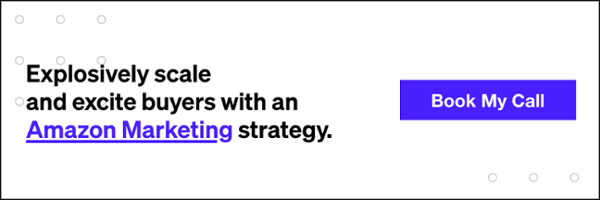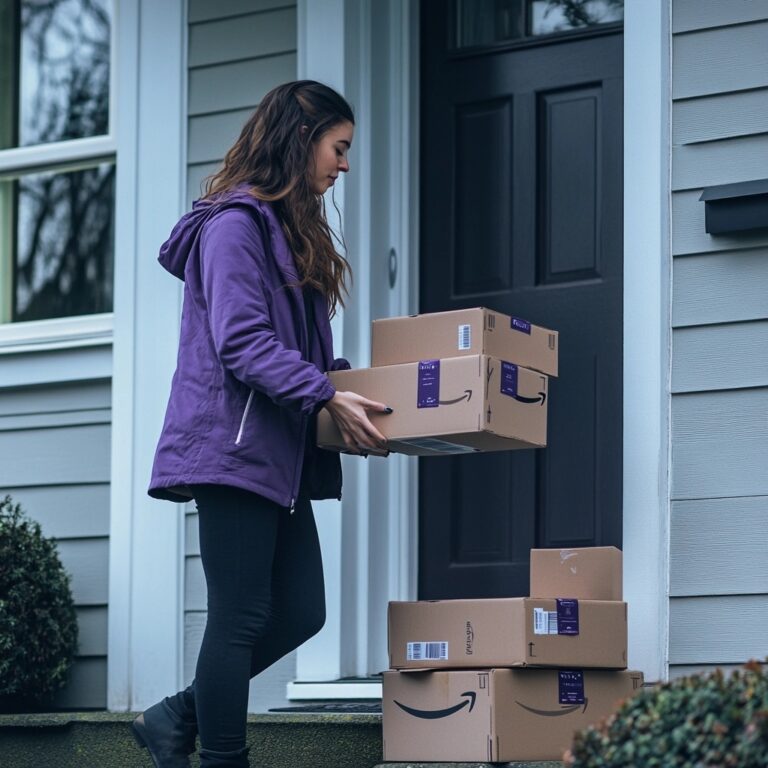What Is Amazon FBA?

It’s estimated that by the end of 2021, Amazon’s market share will account for 50% of the entire eCommerce retail market’s gross merchandise volume (GMV) within the US.1
For any third-party seller, Amazon marketplace is the ultimate mecca. Two out of every three sellers utilized Amazon’s FBA business platform in 2020, generating $80.46 billion for Amazon in third-party seller service revenue—a 49.66% YOY increase. This accounts for more than half of all its sales.2
But what is Amazon FBA and how can you get your share of this eCommerce hub?
What Does Fulfilled by Amazon Mean?
Amazon’s Seller Central empowers eCommerce businesses to sell directly to every Amazon customer. Getting started is as easy as setting up a Seller Central account.
When you join, Amazon gives you one of two options:
- Pay a 99¢ free for every item sold + closing fees
- Pay a monthly $39.99 + selling fees
Amazon suggests that businesses selling more than 40 items per month should opt for the second option, also known as the professional plan. After you make your selection, you have yet another binary choice to make in regards to order fulfillment.
Either, you can fulfill them directly, on your own. This means you handle shipping, returns, and customer service for all orders. Or, you can opt to join the FBA program.
And what is FBA?
FBA—Fulfilled by Amazon—means that Amazon handles all of the storage and shipping logistics on your behalf. You send your products to Amazon’s fulfillment center, and they handle everything from there, including:
- Storage
- Packaging
- Shipping
- Returns
- Exchanges
- Customer service
Put simply, you manage sales and make sure Amazon remains stocked with your goods. They manage the rest.
How Does the FBA Process Work?
Broken down, the FBA process is fairly straightforward:
- You send your inventory to the Amazon fulfillment center near you.
- Amazon stores that inventory until you can sell it.
- After an item sells, Amazon pulls it from their warehouse and sends it to fulfillment.
- Fulfillment packs the item, ships it, and then tracks the order.
- If there’s an issue, whether it’s a return, a replacement, or an inquiry, Amazon’s. customer service manages the response for you.
Naturally, Amazon doesn’t do this for free. There are FBA fulfillment fees you must pay in exchange for fulfillment services. But more on that later.
Benefits of Amazon FBA
So, why should you join the Amazon FBA program? There are several advantages to becoming a member, including:
- Amazon Prime Eligibility – Perhaps the most important reason, when you list products for FBA, they’re eligible for Amazon Prime’s free two-day shipping. For prime customers, this is a major draw and could be the difference between them choosing your item or a competitor’s.
- Effortless fulfillment – With the FBA program, Amazon’s world-class shipping and logistics teams do all of the fulfillment work, from A-Z. For a modest fee, you have one less thing to worry about. This frees you up to focus on selling, marketing, branding, and other company logistics.
- Discounted shipping rates – Shipping products on your own is extremely costly, especially on smaller orders. Amazon’s direct shipping service reduces those shipping cost expenses. Over time, the savings add up.
- Fast shipping – When products are FBA, the fulfillment process goes at a lightning speed. This rapid turnaround keeps everyone happy.
- Reputation – Buyers trust Amazon, especially products that Amazon backs. When you list products on Amazon as FBA, you create a competitive advantage, especially compared to only selling your items from your online store.
- Storage space – Whether you were storing items in your home or in a warehouse, by partnering with Amazon, you no longer have to deal with the hassle or associated costs of storage.
- The ability to scale quickly – Amazon FBA can scale with your business. Amazon’s fulfillment services make it possible to grow the business without having to worry about capital investments or staffing needed to store and ship products as demand grows.
What Does Amazon FBA Cost?
As an FBA seller, there are several costs you must account for. These include:
Inventory Fees
Amazon charges a monthly storage fee for goods stored within the U.S. These storage fees are charged midway through the month, typically between the 7th and 15th. The time of the year and the type of good impacts pricing:3
| Non-Dangerous Goods | ||
| Month | Standard-size | Oversize |
| January – September | 75¢/ft3 | 48¢/ft3 |
| October – December | $2.40/ft3 | $1.20/ft3 |
| Dangerous Goods | ||
| Month | Standard-size | Oversize |
| January – September | 99¢/ft3 | 78¢/ft3 |
| October – December | $3.63/ft3 | $2.43/ft3 |
To learn more about what is considered dangerous goods, and which dangerous goods are allowed to be sold on Amazon, Seller Central provides more information.
Additionally, if your product is stored at a fulfillment center for more than a year without being sold, it can be charged a long-term storage fee.
Fulfillment Fees
Amazon also charges a per-unit fee for fulfillment, which varies according to the item’s category, size, and weight.
| Non-Dangerous Goods/ Non-Apparel | ||
| Size Tier | Shipping Weight | Fulfillment fee/unit |
| Small | 6 oz or less | $2.70 |
| 6-12 oz | $2.84 | |
| 12-16 oz | $3.32 | |
| Large | 6 oz or less | $3.47 |
| 6-12 oz | $3.64 | |
| 12-16 oz | $4.25 | |
| 1-2 lbs | $4.95 | |
| 2-3 lbs | $5.68 | |
| 3-20 lbs | $5.68 + 30¢/lb above 3lbs | |
| Apparel | ||
| Size Tier | Shipping Weight | Fulfillment fee/unit |
| Small | 6 oz or less | $3.00 |
| 6-12 oz | $3.14 | |
| 12-16 oz | $3.62 | |
| Large | 6 oz or less | $3.87 |
| 6-12 oz | $4.04 | |
| 12-16 oz | $4.65 | |
| 1-2 lbs | $5.35 | |
| 2-3 lbs | $6.08 | |
| 3-20 lbs | $6.08 + 30¢/lb above 3lbs | |
| Dangerous Goods | ||
| Size Tier | Shipping Weight | Fulfillment fee/unit |
| Small | 6 oz or less | $3.63 |
| 6-12 oz | $3.85 | |
| 12-16 oz | $3.89 | |
| Large | 6 oz or less | $4.22 |
| 6-12 oz | $4.39 | |
| 12-16 oz | $4.82 | |
| 1-2 lbs | $5.52 | |
| 2-3 lbs | $6.12 | |
| 3-20 lbs | $6.12 + 30¢/lb above 3lbs | |
| Over-Sized Non-Dangerous | ||
| Size Tier | Shipping Weight | Fulfillment fee/unit |
| Small oversize | 70lb or less | $8.66 + $0.38/lb above first lb |
| Medium oversize | 150 lb or less | $11.37 + $0.39/lb above first lb |
| Large oversize | 150 lb or less | $76.57 + $0.79/lb above first 90 lbs |
| Special oversize | Over 150 lb | $138.11 + $0.79/lb above first 90 lbs |
| Over-Sized Non-Dangerous | ||
| Size Tier | Shipping Weight | Fulfillment fee/unit |
| Small oversize | 70lb or less | $8.66 + $0.38/lb above first lb |
| Medium oversize | 150 lb or less | $11.37 + $0.39/lb above first lb |
| Large oversize | 150 lb or less | $76.57 + $0.79/lb above first 90 lbs |
| Special oversize | Over 150 lb | $138.11 + $0.79/lb above first 90 lbs |
| Over-Sized Dangerous | ||
| Size Tier | Shipping Weight | Fulfillment fee/unit |
| Small oversize | 70lb or less | $9.38 + $0.38/lb above first lb |
| Medium oversize | 150 lb or less | $12.20 + $0.39/lb above first lb |
| Large oversize | 150 lb or less | $87.93 + $0.79/lb above first 90 lbs |
| Special oversize | Over 150 lb | $157.91 + $0.79/lb above first 90 lbs |
Additional Fees
In addition to the normal fees, there are some others that may pop up from time to time. These include:4
- Unplanned Service Fees – Fulfillment by Amazon (FBA) may also charge unplanned service fees for any one of the following issues:
- Missing label or barcode: ranges from 20¢ – 40¢ per unit
- An oversized or overweight shipping box may be charged a $25 – $75 per unit
- Electrical, sharp, or spilled product hazards may be charged a $25 – $75 per unit
- Unacceptable pallet conditions may be charged a $50 – $150 per unit
- Return processing fees – Similar to shipping and storage fees, Amazon charges a return processing fee that depends on the type of item, handling challenges, and size.
- Closing fees – Certain media products like DVDs, Books, and CDs come with a flat $1.80 per sale cost.
How To Get Started on Amazon FBA?
Setting up an Amazon FBA account only takes a few minutes. Simply follow these steps:
- Start an Amazon Account – If you already have one, you can simply add FBA to the account. If not, opt for an Amazon seller’s account.
- List your products – Add your products to the Amazon catalog. You can do so in bulk, by importing your inventory management software, or one at a time.
- Get your products ready – Prepare your products to be sent to the Amazon fulfillment center. Be sure to package and label them correctly to avoid additional fees.
- Ship your products – Once everything’s ready, set your shipping plan, print your shipment ID labels, and send the products off.
- Start selling – As soon as the products reach the fulfillment center, they will be available for sale.
Power Digital—Helping You Scale Through Amazon’s Marketplace and Beyond
Amazon’s FBA is a boon to small and big businesses alike. For a nominal fee, you no longer have to worry about juggling fulfillment on your own.
But this is just the first step to successfully selling on Amazon. There’s still a lot of work to do and Amazon seller mistakes to avoid. To learn more about other Amazon offerings like Amazon moments or exploring what is Prime wardrobe, visit us today.
Here at Power Digital, we offer digital marketing and growth solutions for your business. By partnering with us, we can make sure that your product sells and your business grows.
Is it really that simple? Reach out today to see that—yes—with us, it is.
Sources:
- Statista. Projected retail e-commerce GMV share of Amazon in the United States from 2016 to 2021. https://www.statista.com/statistics/788109/amazon-retail-market-share-usa/
- Statista. Percentage of paid units sold by third-party sellers on Amazon platform as of 1st quarter 2021. https://www.statista.com/statistics/259782/third-party-seller-share-of-amazon-platform/
- Amazon Celler Sentral. Monthly Inventory Storage Fees. https://sellercentral.amazon.com/gp/help/external/G3EDYEF6KUCFQTNM
- Amazon. Unplanned Service Fees. https://sellercentral.amazon.com/gp/help/external/help.html?itemID=KMP2R2KBXC8R2A7
Our Editorial Standards
Reviewed for Accuracy
Every piece is fact-checked for precision.
Up-to-Date Research
We reflect the latest trends and insights.
Credible References
Backed by trusted industry sources.
Actionable & Insight-Driven
Strategic takeaways for real results.





